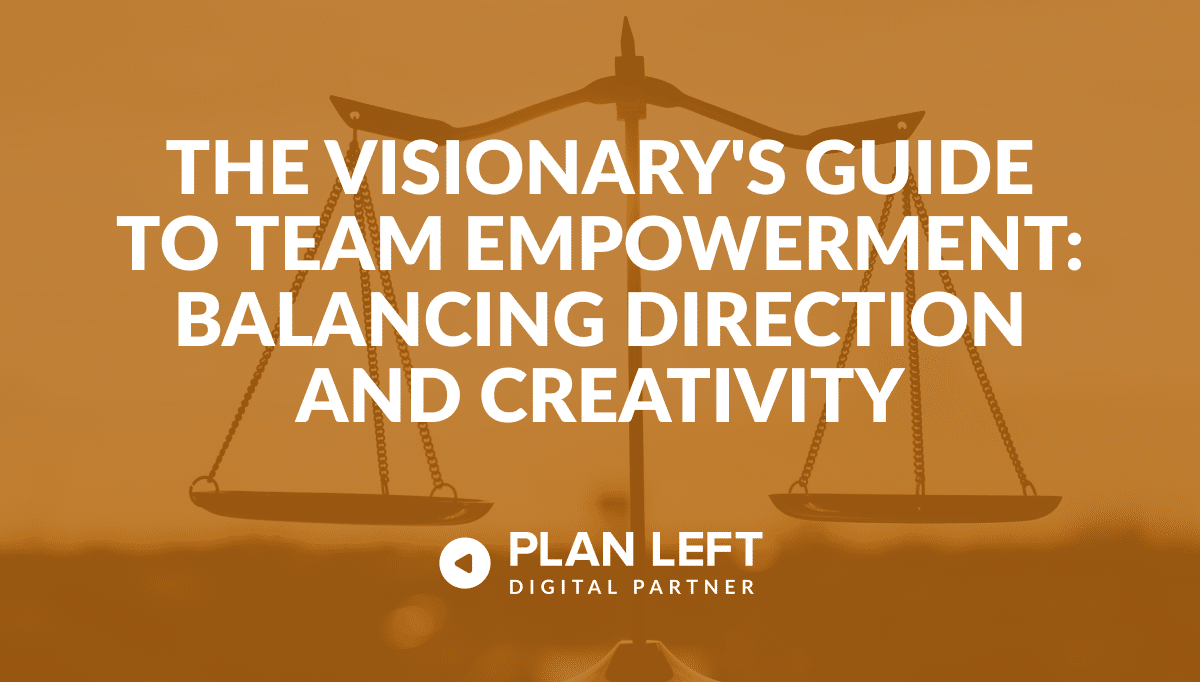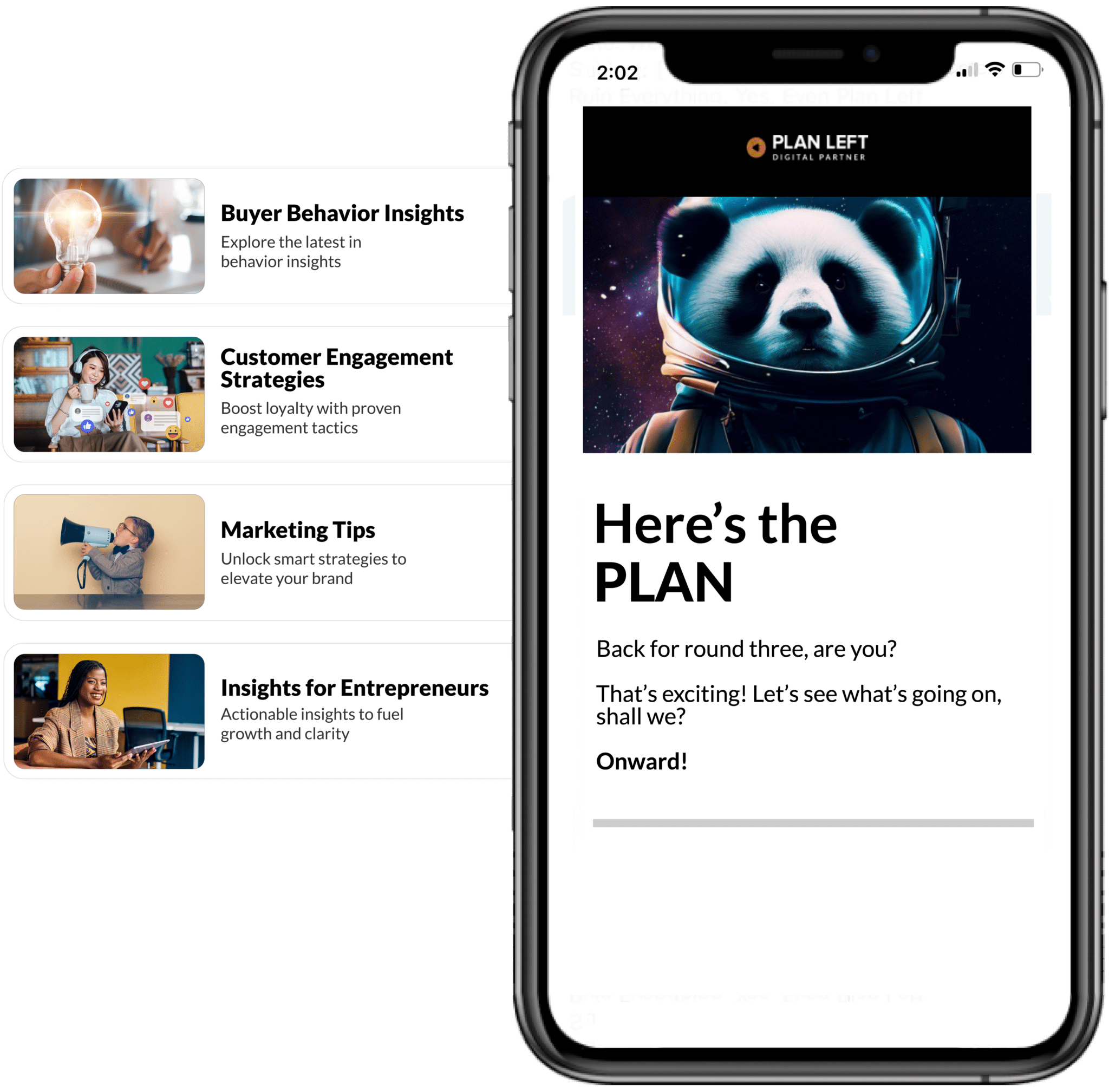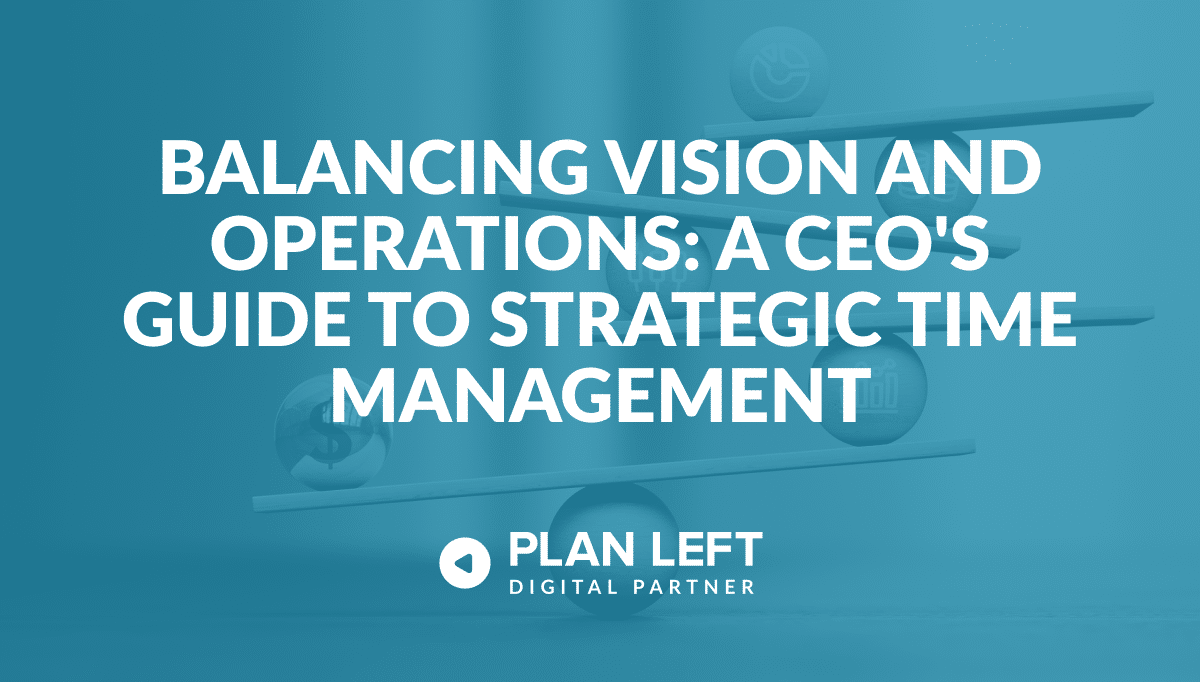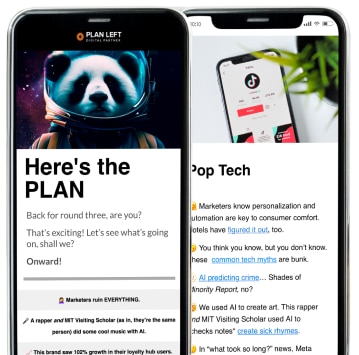
Having a great idea is the starting point for any successful company. But an idea alone isn’t enough. You need to build a great team that’s excited and ready to get things done. The old-school style of management, where one person makes all the decisions, doesn’t really work anymore. If every choice has to be approved by a single person, you become a bottleneck- the one thing slowing everything down. To build a company that can grow and last, you need to create a culture where people feel like owners, not just employees checking off a list of tasks.
This guide gives you a clear plan to do just that. The goal is to create a system where everyone on your team is encouraged to think like a leader and work toward the same big goals. A system like this keeps the company moving forward, even when you’re not around. This is how you turn your great idea into a reality.
Pillar 1: Put Your Company’s Big Ideas into Action
Your company probably has a Purpose, Vision, Mission, and a set of Values. But if they’re just written down in a document nobody reads, they’re not very useful. To truly empower your team, these ideas need to be used every single day. Think of them as the rulebook for how your company operates. When everyone knows the rules, they can make smart decisions on their own, without having to ask you about everything.
- Purpose: This is your company’s “why.” Why does it exist? This is the core reason that gets people excited to come to work.
- Vision: This is the big dream. It’s a picture of what the future will look like if your company succeeds. A clear vision helps everyone aim for the same goal.
- Mission: This is the “what” and the “how.” What does your company do every day to make the vision a reality? This keeps the team focused on the right actions.
- Values: These are the rules for how everyone on the team should act. They guide behavior and shape the company’s culture.
- Value Discipline: This is the one thing your company promises to be the absolute best at. Are you the best at having the lowest price (Operational Excellence), the best at customer service (Customer Intimacy), or the best at having the newest, coolest product (Product Leadership)? Knowing this helps everyone focus on what truly matters to your success.
Making Your Brand Core a Daily Habit
For a company’s guiding principles- its Purpose, Vision, Mission, and Values- to be effective, they cannot simply exist in a handbook or on a poster. They must be woven into the fabric of the organization’s daily life. This means intentionally designing systems and rituals that constantly reinforce “how we do things here.”
When your brand core becomes a daily habit, it transforms from a set of abstract ideas into a practical, operational tool that guides decision-making at every level, ensuring the entire team is consistently aligned and empowered to act with confidence.
Embed Your Values in Hiring and Onboarding
Building a team that lives your brand core begins long before a new employee’s first day. It starts with hiring. Your interview process should be designed not just to assess skills and experience, but to actively screen for alignment with your company’s values. This involves moving beyond standard questions and asking behavioral ones that reveal how a candidate has embodied principles like “collaboration” or “customer obsession” in their past roles.
Once a new hire joins, the onboarding process is your first and best opportunity to immerse them in the culture. Go beyond the paperwork and tech setup; dedicate significant time to storytelling, sharing examples of how the company’s values have guided real-world decisions and led to success. This initial immersion sets the expectation that the brand core is not just a suggestion, but the fundamental operating system for everyone on the team.
Reinforce Principles in Daily Work and Recognition
After the first week, the challenge is to keep the company’s principles top-of-mind. This requires integrating them into the daily rhythm of work. Values should be a formal component of performance reviews, providing a clear framework for feedback that goes beyond pure metrics.
Public recognition is another powerful tool; creating a simple ritual, like a weekly “Values Champion” award in a company-wide meeting, celebrates specific team members who have exemplified a core principle. This not only rewards the individual but also provides a concrete, visible example for everyone else of what the values look like in action. When principles are tied directly to career growth and public praise, they become an undeniable part of how success is measured and understood within the organization.
Empower Your Team to Deliver on Brand Promises
Ultimately, your brand core is most powerfully expressed through the actions of your team, especially in customer-facing roles. A value like “Trust” or “Simplicity” is meaningless until it is demonstrated to a customer. This means empowering your support and success teams to resolve issues on the spot by giving them the authority to make decisions- like issuing a refund or offering a discount without seeking managerial approval.
When a team member can confidently tell a customer, “I can solve that for you right now,” they are not just providing good service; they are delivering a tangible expression of the company’s values. This creates a virtuous cycle: the team feels trusted and empowered, and the customer experiences the brand promise firsthand, building deep and lasting loyalty.
A Simple Example
When you have a tough choice to make, bring the team in. You could say, “We have two options here. Option A is faster, which fits our Value of being the most efficient. But Option B fits better with our Value of putting customers first. Which choice will help us reach our Vision and serve our Purpose in the long run?” This approach not only leads to better decisions but also constantly trains your team to use the brand core as a practical guide for their own work.
Why Your Team Should Care (And How It Helps Them)
When your brand core is consistently applied, it becomes more than a top-down mandate; it becomes a practical tool for every team member. Think of it as an internal compass that guides their decisions, especially when they face a tough choice and you aren’t available.
It acts as their permission slip to take initiative with confidence, knowing their actions align with what the company stands for. This clarity not only reduces their stress and makes their job easier, but it also instills their work with a sense of meaning that goes far beyond a simple paycheck.
Connecting Your Core to Your Bottom Line
Ultimately, these guiding principles are not just feel-good concepts; they are directly connected to your business’s bottom line. A clear Purpose and strong Values are proven to increase employee retention, saving significant money on hiring and training. A focused brand promise- such as becoming the best at customer service- cultivates deep customer loyalty, turning satisfied clients into vocal advocates who drive word-of-mouth marketing.
Furthermore, when the entire team is aligned on the Mission, you drastically reduce wasted time and resources on projects that don’t serve the main goal. Everyone pulls in the same direction, creating an efficient and profitable organization.
Key Takeaways:
- Structure interviews to screen for values and use onboarding to immerse new hires in your culture.
- Integrate principles into performance reviews and public recognition to reinforce their importance.
- Grant autonomy to customer-facing teams to let them deliver on your brand promises.
- Position the brand core as a tool that empowers employees to act confidently and reduces their stress.
- Clearly link a strong, lived-out culture to business outcomes like retention, loyalty, and efficiency.
Pillar 2: Build a Sandbox, Not a Cage
The most effective leaders provide their teams with a framework for success, not a restrictive set of rules. This is the difference between building a sandbox and a cage. A cage limits movement with rigid bars, but a sandbox provides clear boundaries within which a team has the freedom to build, experiment, and create anything they can imagine. Expanding this pillar is about making that sandbox a tangible reality through shared principles, clear boundaries, and radical transparency.
Make the Rules a Team Sport
People will champion rules they help create. Moving beyond a top-down mandate for “how we work” is essential for genuine buy-in. Instead of simply presenting a finished process, you should facilitate a conversation where the team itself defines the rules of engagement. This can be accomplished through behavioral values workshops where, for example, a vague value like “Excellence” is translated into specific, role-based actions and outcomes.
The result of these conversations should be a living document, a “Team Constitution,” that outlines their own agreements on everything from communication norms to meeting etiquette. This approach transforms rule-making from a one-time event into an evolving dialogue, reinforced through quarterly process reviews where the team can adapt and improve the rules based on what’s actually working. When a customer support team co-creates a policy allowing them to issue a $100 refund without approval, they aren’t just following a rule; they are upholding a standard they set themselves, feeling the ownership and trust that comes with it.
Key Takeaways:
- Run workshops for teams to define how company values translate into their specific daily behaviors.
- Empower each team to create and maintain its own “constitution” of working agreements.
- Schedule regular reviews to ensure the rules evolve with the team’s needs.
Set Up ‘Guardrails’
Autonomy without alignment is chaos. The function of “guardrails” is to provide clear, firm boundaries that give your team the confidence to move fast and experiment safely. To build them effectively, you must be explicit about the few “non-negotiables” for any given project- the budget, the final deadline, core brand guidelines, or essential legal requirements. Beyond these, you can introduce “smart constraints” that actively channel creativity.
For instance, challenging a team to improve a process without buying new software forces them to innovate rather than simply spend. This can be formalized through systems like tiered budgets, where a team has full autonomy up to a certain dollar amount, with a simple check-in required for anything larger. This protects the business from major risk while eliminating managerial bottlenecks for most decisions. With these guardrails in place, a team knows exactly how far they can run in any direction, giving them the freedom to sprint within a safe and well-defined space.
Key Takeaways:
- Clearly articulate the “non-negotiable” boundaries for every project, such as budget, timeline, and brand standards.
- Use “smart constraints” to intentionally limit options and spark innovative, resourceful solutions.
- Implement tiered approval systems to grant freedom for small decisions and maintain oversight for large ones.
Make It Clear Who’s in Charge
The single greatest source of friction in a collaborative project is ambiguity over decision-making authority. To eliminate this, you must formally adopt the concept of a “Directly Responsible Individual” (DRI). This is not an informal title but a public declaration of ownership that should be embedded in every project plan, meeting agenda, and task tracker. It is crucial to clarify that the DRI is accountable for the outcome, not for doing all the work. Their role is to ensure progress, break ties, and make the final call when the team is divided.
For larger initiatives, this model can be supported with a lightweight RACI (Responsible, Accountable, Consulted, Informed) chart, where the DRI is always the single “Accountable” party. When launching a new website, for example, the developer is responsible for the code and the designer is responsible for the visuals, but the DRI from marketing is the one person accountable for the project’s success and has the final say on any disputes. This clarity eradicates confusion and empowers the entire team to move forward with confidence.
Key Takeaways:
- Assign a single, named “Directly Responsible Individual” (DRI) for every significant project or initiative.
- Define the DRI’s role as being accountable for the outcome, not responsible for executing every task.
- For complex projects, use a RACI chart to clarify the DRI’s authority and every other stakeholder’s role.
Make Information Impossible to Miss
You cannot expect your team to act like owners if you don’t give them access to the information that owners need. Building a culture of empowerment requires a deliberate shift toward radical transparency. The first step is creating a “single source of truth”- a centralized, universally accessible hub like an intranet or a shared database where all critical company information lives, from financial dashboards to project roadmaps.
The second step is to cultivate the habit of “working in the open,” encouraging teams to default to public communication channels instead of private messages, creating a searchable archive of context and decision-making. Finally, leaders must model this behavior by providing the “why” behind the data. Don’t just share a report; write a brief memo that explains the story behind the numbers, your hypothesis about what they mean, and the proposed plan. This approach doesn’t just inform your team; it teaches them how to think strategically, building the collective intelligence of the entire organization.
Key Takeaways:
- Establish and maintain a “single source of truth” for all critical company information and documentation.
- Foster a culture of “working in the open” by defaulting to public channels for communication.
- When sharing data, always provide context, interpretation, and the “why” behind it to build strategic thinking.
An Essential Tool: The Levels of Delegation
Being clear about how much power you are giving someone is super important. It helps you build trust and slowly give your team more freedom. Use a simple scale to explain what you expect:
- Level 1: Look Into It. This means, “Please research this topic and report back to me. I will make the final decision.”
- Level 2: Give Me Options. This means, “Look into this, tell me the different ways we can handle it, and recommend one. I will then make the decision.”
- Level 3: Decide, but Check with Me. This means, “Make a decision, but let me know what you’ve decided before you take any action.”
- Level 4: Decide and Go. This means, “Make the decision and take action. You can let me know how it went afterward.”
- Level 5: Handle It. This is the highest level of trust. It means, “Take care of this completely. I trust your judgment. You don’t need to check back with me.”
Pillar 3: Create a Culture of Honest Feedback
To be a great company, you need a culture where people feel comfortable speaking the truth. Most of the time, people stay quiet because they’re afraid of looking dumb or getting in trouble. As a leader, your job is to make it feel safer for people to speak up than to stay silent. This means being direct and honest, but also showing your team that you support them. This is how you create a space for the tough conversations that help everyone get better.
Why Honest Feedback is Good for Business
This isn’t just about being nice; it’s about being smart. A culture of honest feedback is like an early-warning system for your company.
- It Saves You Money: When people feel safe to speak up, they’ll point out a small problem before it becomes a giant, expensive disaster. It’s the difference between fixing a small bug in your website and having the whole site crash on your busiest day.
- It Makes You Money: Your best ideas for new products or better ways of working are often hidden in the minds of your team members. If they’re afraid to share, you’ll never hear them. Honest feedback unlocks innovation that can lead to new customers and more revenue.
- It Saves You Time: When a team can talk openly about a process that isn’t working, they can fix it quickly. This stops people from wasting time on tasks that don’t add value and makes the whole company run more smoothly.
Making It Safe to Speak Up (The Hard Part)
Let’s be honest: most people avoid giving direct feedback because they don’t like conflict. They worry about hurting someone’s feelings or making things awkward. Your main job as a leader is to build Psychological Safety- which is the belief that you won’t be punished or made to feel stupid for speaking up.
- Admit Your Own Mistakes: When you make a mistake, own it openly. Say, “I messed that up, and here’s what I learned.” This shows your team that it’s okay not to be perfect.
- Thank People for Bad News: When someone brings a problem to you, your first words should be, “Thank you for telling me.” This encourages people to come to you early, when problems are still small.
- Focus on the Problem, Not the Person: Frame feedback as a team effort. Instead of saying, “You made a mistake in this report,” try saying, “I noticed a mistake in this report. How can we work together to fix it?” This makes it about solving a problem together, not about placing blame.
How to Make Feedback a Daily Habit
Good intentions aren’t enough. You need to build systems, or “rituals,” that make feedback a normal part of how you work.
- Go First: Ask for feedback on your own work, and really listen to it. Don’t get defensive. For example, you could ask your team, “How do you think I could have handled that meeting better?” This shows everyone that it’s okay to be open and to learn from mistakes.
- Hold Project “Retrospectives”: After any project, get the team together for 15 minutes and ask three simple questions: “What went well?”, “What didn’t go so well?”, and “What will we do differently next time?” This makes learning from experience a habit.
- Encourage Peer Feedback: Create a simple way for team members to give each other praise, like a “kudos” channel in your chat app. And teach them how to give constructive feedback to each other so it doesn’t always have to come from a manager.
- Keep It About the Work, Not the Person: Use a simple method like the SBI (Situation-Behavior-Impact) model to give feedback. Instead of saying, “You were rude in that meeting,” you could say, “In the marketing meeting this morning (Situation), when you interrupted a team member (Behavior), I noticed they stopped sharing their ideas (Impact).” This is much more helpful and less personal.
Your Toolkit for Getting Things Done
Once you’ve built a culture of trust and honesty, you need a few simple tools to help your team work together effectively. These aren’t just ideas; they are specific, repeatable processes you can start using this week.
Tool #1: Retrospective
This is a simple meeting for learning and continuous improvement. It’s not about blame; it’s about looking at a project or period of time to figure out what to do better next time. A retrospective creates a safe space for the team to be honest about challenges and celebrate what worked.
How to run a Retrospective:
After a project ends or at a regular interval (like every two weeks), gather the team. Keep the meeting focused and blame-free. Guide the discussion with three questions:
- What went well? Recognize successes to understand what strengths you can build on.
- What didn’t go so well? Identify challenges or obstacles. The goal is to find the root cause of problems, not to point fingers.
- What will we do differently next time? Brainstorm a few concrete, actionable steps the team can take to improve.
Write down the action items and assign an owner to each one. This ensures the conversation leads to real change.
Tool #2: The Simple Decision-Making Chart
When you empower your team to make decisions, give them a simple framework to clarify their thinking. This prevents rash choices and ensures that key factors are considered. For any important decision, ask the person in charge to briefly document their thought process:
- Pros: What are all the potential positive outcomes? How does this decision align with our goals and values?
- Cons: What are the potential downsides and risks? What’s the worst-case scenario?
- Mitigation & Amplification: What concrete steps can we take to minimize the “cons” and maximize the “pros”? This moves the team from simply identifying risks to actively managing them.
This chart doesn’t need to be a long report; a few bullet points for each section is often enough. It forces clear thinking, creates a record of why a decision was made, and makes it easier for you to provide guidance without taking over ownership of the problem. Instead of the team member coming to you with a question, they come to you with a proposed solution and their logic. This allows you to coach them by asking clarifying questions, helping them strengthen their own decision-making process for the future.
Tool #3: The 30-Minute Weekly Check-in
Keep everyone on the same page without wasting hours in unproductive meetings. A fast-paced, highly structured weekly meeting can replace countless status update emails and side conversations. The agenda is always the same:
- 5 Minutes: Good News: Each person shares one quick personal or professional win from the past week. This isn’t fluff; it builds morale, strengthens team bonds, and starts the meeting on a positive note.
- 10 Minutes: The Numbers: Quickly review a handful of Key Performance Indicators (KPIs). Don’t analyze them deeply in the meeting- just present the data so everyone has a shared understanding of how the team is tracking against its goals.
- 15 Minutes: Priorities & Roadblocks: Each person states their single most important priority for the coming week and mentions any obstacles where they need help from the group. The goal isn’t to solve the problem in the meeting, but to identify it so the right people can connect afterward.
This format keeps the entire team aligned and focused on what matters most, surfaces problems before they become crises, and maintains a powerful sense of forward momentum.
A Team That Grows Together
The ultimate goal is to have a team where everyone is free to do their best work, and all that hard work is pointed in the same direction. It’s a place where people feel trusted and don’t have to wait for permission to take action. When that happens, all the individual creativity and effort adds up to something truly great.
But it’s important to remember that building this kind of culture isn’t a project you finish. It’s more like a garden that you have to tend to every day. You’ll have to keep reinforcing the values, coaching your team, and making sure everyone feels safe and supported.
As your team gets stronger, your role as a leader will change. You’ll shift from being the main problem-solver to being the head coach. Your new job is to ask great questions, help your team members grow their skills, and clear the big obstacles out of their way. It’s a journey that will help you grow as much as it helps your team.
Building this kind of company is the most important job of any leader. It’s how you build a business that doesn’t just succeed, but also makes a real difference- with a team that believes in the vision as much as you do and feels proud of the work they do every day.
Explore Latest Posts
Breaking Free from Marketing Silos: Why Community Matters for Business Growth Every entrepreneur knows the weight of making decisions alone. ... read more
December 11, 2025
A Step-By-Step Approach to Breaking Free from Generic Marketing Enterprise marketing leaders face the challenge of standing out among countless ... read more
December 9, 2025
The constant tug-of-war between strategic vision and operational demands defines the modern CEO experience. While your company's future depends on ... read more
December 4, 2025
Essential Strategies for Entrepreneurs
Get Actionable Business Insights & Marketing Tips
Our newsletter delivers real-world strategies from entrepreneurs who’ve been exactly where you are.
Sign up now for:
- Actionable growth strategies that work
- Insider tactics for attracting top talent
- Real-world case studies from successful founders
- Emerging tech trends that drive innovation
- Pragmatic marketing approaches for visionary leaders




